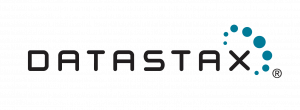This blog post was written in partnership with DataStax.
Federal agencies have been talking about the cloud for more than a decade. With mandates from the White House like the Cloud First Policy enacted by the Obama administration in 2010 and, more recently, an updated approach to modernization as part of the 2018 Modernizing Government Technology (MGT) Act, as well as the shift to “Cloud Smart,” the cloud has been a top-of-mind issue.
Security, however, was always the key sticking point for many agencies hesitant to move their systems into the cloud. Is the cloud really secure? How can you fully capitalize on the cloud and ensure security to advance your agency’s mission while respecting compliance and security?
While the public cloud provides a great infrastructure for agencies, and it has the benefits that are advertised, it’s not right for every scenario. This is because agencies can’t rely on public cloud if they lack a great network connection, which is a problem in a foreign operating base in the middle of a desert, or a battle group in the middle of the ocean – or in any other remote spot where there might not be network support.
The mission requirement, and overall sensitivity of federal data, necessitate more thought than just placing data in a public cloud.
To manage, protect and secure personally identifiable information (PII), agencies must know where the data is stored, who can access it and how long it must be retained. From security and operational standpoints, it’s critical that agencies make sure that they don’t have to rewrite strategies and architectures to meet need.
This is where a hybrid cloud solution comes in.
“Cloud smart to me means a multi-cloud and a hybrid cloud strategy,” Brian Shealey, Enterprise Sales Manager of Federal and the Defense Department (DoD) at DataStax, told GovLoop. This means a strategy that will keep agency data safe, secure, and easily accessible.
Agencies need limitless scale, and the performance that they would receive from a cloud application environment within that hybrid cloud solution; they want real-time performance, or the ability to quickly contextualize data through analytic insights in various modalities. This means incorporating machine learning and algorithms when and where possible.
“You’ve got to build for these expanded capabilities, and you have to build across the hybrid and multi-cloud architecture,” Shealey said.
Hybrid cloud gives agencies the functionalities of both private and public clouds, and the DataStax Enterprise hybrid cloud solution in particular offers an always-on, hybrid cloud database for modern applications. The advanced security capability reinforces the data layer to make sure that citizen data is protected from harm through unified authentication, data auditing, and permission management.
DataStax works on building contextual, always on, real-time, distributed, scalable (CARDS) data management analytics to help agencies build hybrid cloud capabilities. The company is built around Apache Cassandra, offers up to four times the horsepower of Apache Cassandra, and is completely open architecture. Ultimately, DataStax helps agencies further their missions and help citizens by securing their cyber architecture with hybrid cloud.
To learn more, visit: datastax.com.

